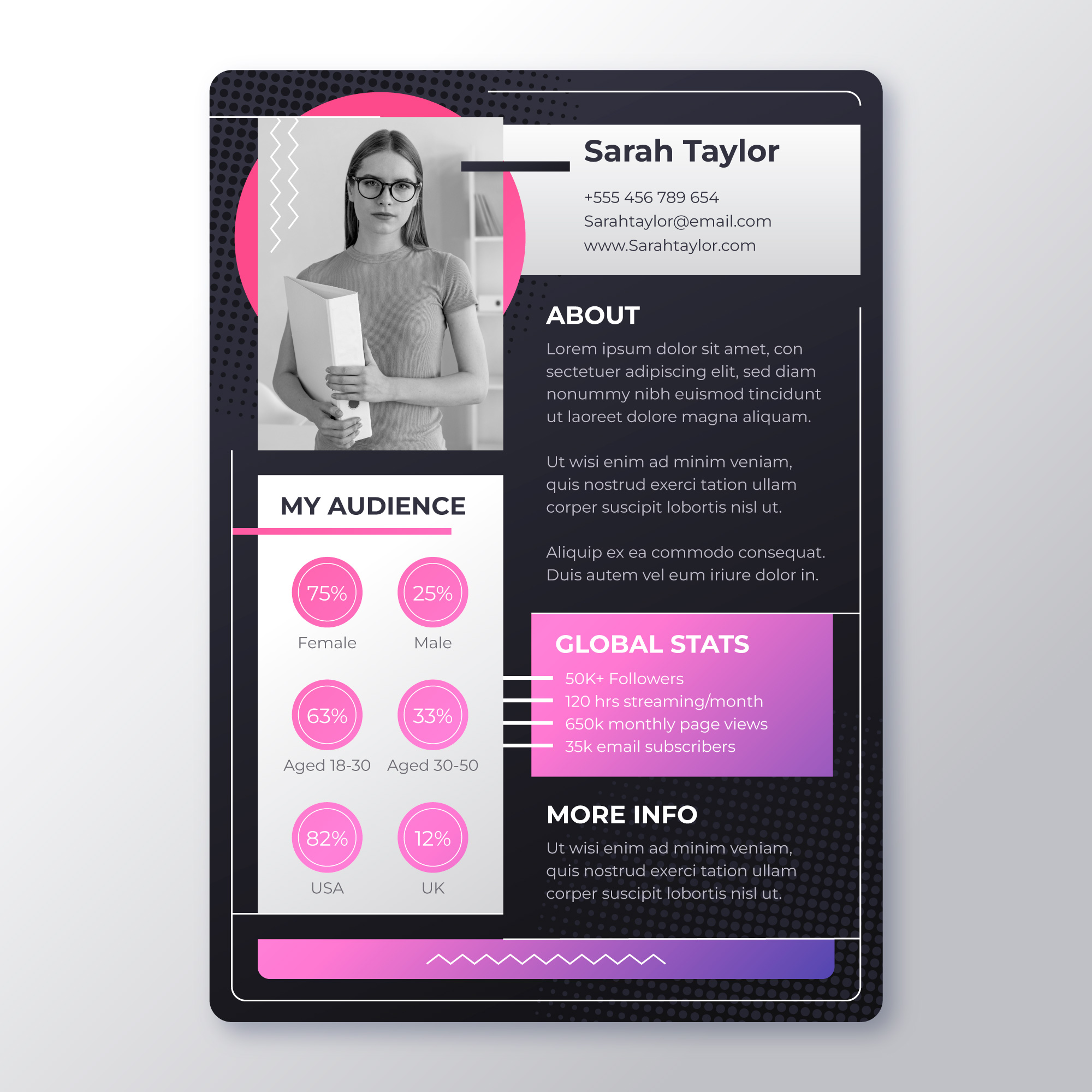In today’s digital age, having an online presence is essential for career development. “Building a professional e-portfolio” is one of the most effective ways to showcase your skills, accomplishments, and expertise to potential employers, clients, and collaborators. Unlike a traditional CV, an e-portfolio offers a dynamic platform where you can present your work in a more interactive and engaging way. This blog post will guide you through the process of creating an impressive e-portfolio that can help you stand out in the competitive job market.
Click Here for a perfect Portfolio
Why You Need a Professional E-Portfolio???
Building a professional e-portfolio is no longer optional; it’s a necessity. Whether you are a recent graduate, freelancer, or seasoned professional, an e-portfolio can significantly enhance your career prospects by allowing you to:
Showcase Your Work: An e-portfolio provides a space to display your projects, case studies, presentations, and other work samples. This gives potential employers a clearer idea of your capabilities.
Demonstrate Skills: It offers a way to demonstrate your skills through real-world examples, which is far more impactful than just listing them on a CV.
Build Credibility: A well-designed e-portfolio establishes your personal brand and positions you as a credible and professional candidate.
Create a Lasting Impression: When employers can see the quality of your work firsthand, it leaves a lasting impression that sets you apart from other applicants.
Essential Components of a Professional E-Portfolio:
A well-structured e-portfolio should contain several key components that collectively showcase your qualifications, skills, and personality.
1. Professional Introduction:
Your e-portfolio should begin with a compelling professional introduction. This is your opportunity to introduce yourself and explain what makes you unique.
Biography: Write a short biography that covers your background, work experience, and career goals. Keep it concise but engaging, offering a glimpse into who you are professionally and personally.
Profile Picture: Use a high-quality, professional photo to create a positive first impression. Your image should reflect your industry standards.
Contact Information: Make sure to include up-to-date contact information so that employers or potential clients can easily reach you.
2. Work Samples and Projects:
The heart of any professional e-portfolio is your work samples. This section should include a variety of your best work, tailored to your industry.
Diverse Range: Showcase a variety of projects that demonstrate different aspects of your skills and expertise. If you are a graphic designer, for example, include logos, websites, branding materials, and more.
High-Quality Visuals: Use clear, high-resolution images, videos, or PDFs to present your work. Visual appeal is key to grabbing attention.
Project Descriptions: For each project, include a brief description explaining the context, challenges, and your contributions. Highlight any successful outcomes or metrics if applicable.
3. Skills and Competencies:
One of the main purposes of an e-portfolio is to provide evidence of your skills. While a CV might just list your qualifications, your e-portfolio can bring these to life.
Organise by Categories: Group your skills into categories such as technical skills, soft skills, and industry-specific competencies. This makes it easier for employers to identify your strengths.
Show, Don’t Tell: Instead of just listing your skills, demonstrate them. For example, if you claim to have web design skills, include links to websites you’ve built.
Certifications: Include any certifications you’ve earned that are relevant to your industry. These add credibility to your skills and expertise.
4. Professional Experience:
Include a section that details your professional experience, much like a traditional CV, but with added depth. This section should showcase your work history and highlight key achievements.
Job Roles: Clearly list your previous job titles, employers, and dates of employment. Use bullet points to summarise your roles and responsibilities.
Achievements: Focus on your accomplishments in each role rather than just your tasks. Use metrics to quantify your success, such as “Increased sales by 20%” or “Led a team of 10.”
Case Studies: Consider adding detailed case studies for significant projects or roles. A case study can walk readers through your problem-solving process and showcase the results you achieved.
5. Testimonials and References:
Including testimonials from colleagues, clients, or supervisors can add an extra layer of credibility to your e-portfolio. Positive feedback from people who have worked with you provides a sense of trustworthiness and competence.
Client Testimonials: If you have worked with clients, ask them to write a brief testimonial about their experience with your services. Make sure the testimonials are authentic and specific to the work you did for them.
Professional References: You can also list professional references or include short quotes from former employers who can vouch for your skills and work ethic.
Read more: Perfecting Your CV Layout for Professional Success
6. Education and Training:
Your education and training are vital components of your professional background. Include a section where you list your academic qualifications, training courses, and relevant workshops.
Degrees and Certifications: List your degrees, certifications, and any additional training that is relevant to your industry. This demonstrates your commitment to continuous learning and professional development.
Workshops and Seminars: If you’ve attended workshops, seminars, or conferences, mention these as well. These experiences can showcase your dedication to staying current in your field.
7. Blog or Thought Leadership Section:
Adding a blog or thought leadership section to your e-portfolio can further demonstrate your expertise. This is especially useful for professionals in knowledge-based industries like marketing, IT, and education.
Write about Industry Trends: Use this space to write articles or blog posts about trends and developments in your industry. This shows that you are knowledgeable and passionate about your field.
Share Insights and Solutions: Share your own insights, ideas, or solutions to common challenges in your industry. This can position you as a thought leader and attract attention from potential employers or clients.
Tools for Building a Professional E-Portfolio
Building a professional e-portfolio is easier than ever, thanks to various online tools and platforms designed specifically for this purpose.
1. WordPress:
WordPress is a popular platform for building websites, and it offers many themes and plugins that are perfect for creating an e-portfolio. You can customise your site with ease and integrate multimedia elements such as images, videos, and slideshows.
Customisable Templates: WordPress offers numerous templates designed specifically for portfolios, making it easier to build a professional-looking site.
Plugins for Portfolio Management: WordPress also offers a range of plugins that can help you manage and organise your portfolio, making it more user-friendly.
2. Wix:
Wix is a drag-and-drop website builder that allows you to create a professional e-portfolio without any coding knowledge. It offers a range of templates, including those tailored for portfolios.
Easy to Use: With its drag-and-drop interface, Wix makes it simple to customise your portfolio and create a unique online presence.
Multimedia Integration: Wix allows you to easily upload images, videos, and other multimedia to showcase your work effectively.
3. Behance:
If you’re in a creative field like graphic design, photography, or illustration, Behance is a great platform for showcasing your work. It’s widely used by creative professionals and offers a built-in network of potential clients and collaborators.
Creative Focus: Behance is designed specifically for creative professionals, making it ideal for displaying portfolios that focus on visual work.
Networking Opportunities: The platform allows you to connect with other creatives and potential clients, expanding your professional network.
4. LinkedIn:
While LinkedIn is traditionally seen as a social network for professionals, it also allows you to showcase a portfolio of work samples, articles, and achievements.
Integrated Portfolio: LinkedIn allows you to upload documents, presentations, and media directly to your profile, making it a great platform for sharing your portfolio.
Professional Network: Building a professional e-portfolio on LinkedIn also helps you connect with employers, clients, and peers in your industry.
Read more: Ensure Success with a CV Health Check
Tips for Making Your E-Portfolio Stand Out:
Creating an e-portfolio is just the first step. To truly stand out, you need to focus on presentation, content, and user experience.
1. Keep it Updated:
An outdated e-portfolio can send the wrong message to potential employers. Keep your e-portfolio updated with your latest projects, skills, and achievements.
2. Mobile Optimisation:
Make sure your e-portfolio is mobile-friendly. Many employers and clients will view your portfolio on their phones, so it’s essential that your content is easy to navigate on smaller screens.
3. SEO Optimisation:
Search Engine Optimisation (SEO) can help your e-portfolio appear in search results when employers are looking for candidates in your industry. Use relevant keywords in your portfolio content and ensure that your site is indexed by search engines.
4. Interactive Features:
Consider adding interactive features such as video introductions, clickable case studies, or downloadable CVs. This can make your e-portfolio more engaging and help you stand out from other candidates.
Conclusion:
“Building a professional e-portfolio” is an essential step for anyone looking to advance their career in the digital age. A well-organised, visually appealing e-portfolio allows you to showcase your skills, experience, and achievements in a way that a traditional CV cannot. By following the steps outlined in this blog post, you can create an e-portfolio that not only highlights your abilities but also helps you stand out in a competitive job market.
Get your LinkedIn Profile Optimised alongside an entire range of Personal Branding: www.brandme4job.com
Join www.stunited.org to build a wide network in the United Kingdom.
Contact us to get Career Assistance in the UK: Call Us Now!
#Brandme4job #Brandme4job.com #PersonalBranding #JobSkillsTraining #E-BookStore #OnlineBooks #SkillDevelopment #UKJobMarket #CareerBranding #CareerInTheUK #JobsInTheUK #CareerOpportunities #JobAssistance #DesignerCV #ATSEnabledCV #AICV #ProfileOptimisation #StunitedProfileOptimisation #CoverLetter #CandidateBooklet #EPortfolio #MagazineFeature #LinkedInOptimisation





